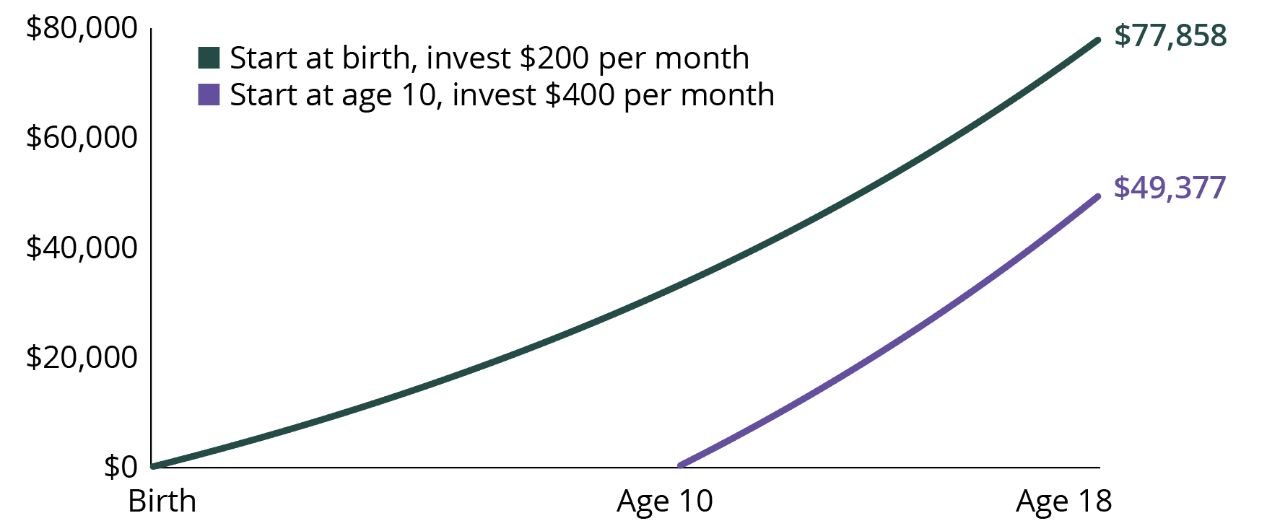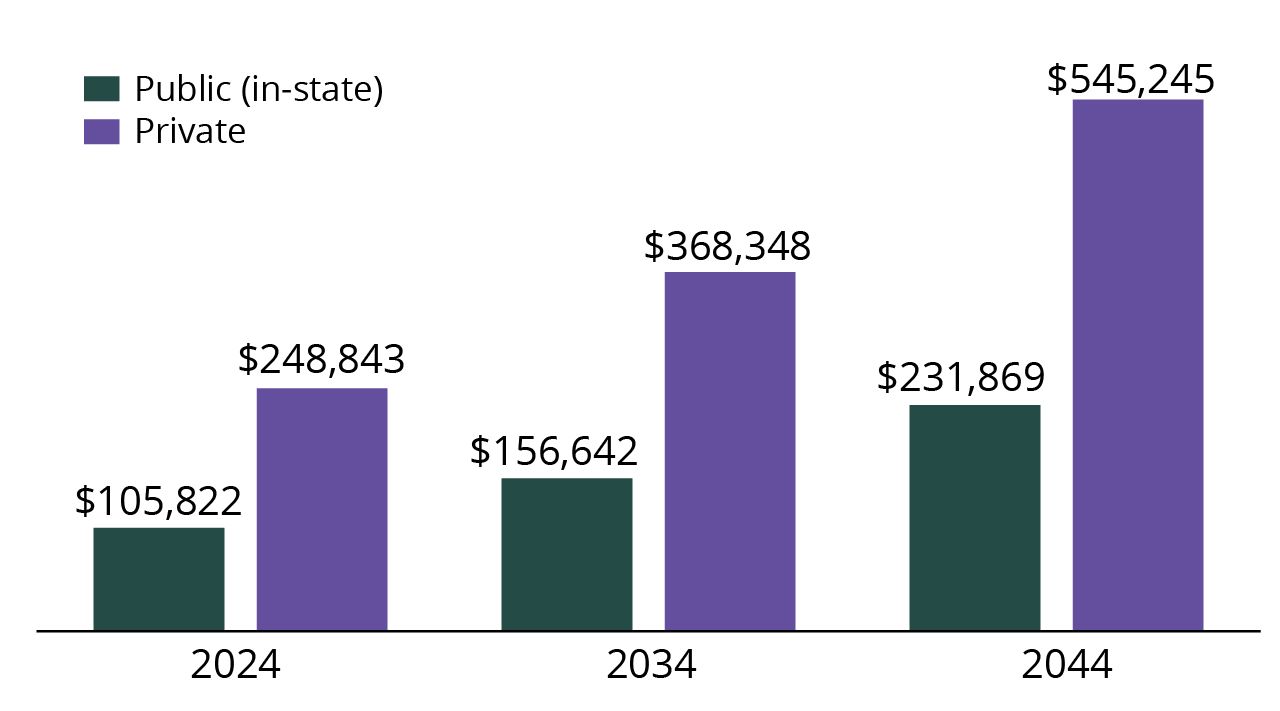Average cost of books and supplies for a full-time student in a 4-year undergrad program

The College Board, “Trends in College Pricing and Student Aid 2024,” 10/24.
Newborns—the joys are limitless. Tiny fingers. Toothless smiles. The intoxicating new baby smell. But first-time and veteran parents alike know that limitless anxieties come along with having a new baby, too. One particular worry that looms large for today’s parents is the cost of college.
Annual tuition, room, and board today can cost anywhere between $25,000 to upwards of $59,000 at a four-year institution.1 Who knows what it will be 18 years from now? And with student debt in America totaling upwards of $1.77 trillion,2 how could new parents not be nervous?
The best way to save for your child’s college education? Start early.
Invest Early, Invest Often
Parents of newborns and young children have one huge advantage when it comes to contributing to a 529 plan: time. This is the most valuable asset when it comes to long-term investments. By investing in your child’s education when they’re still young, you have a large window of opportunity to capitalize on potential compound interest. Even investing a modest sum may set your child up for success (after all, you have bibs and pacifiers and diapers—so many diapers!—to buy).
For example, investing $200 per month from the time a child is born until the day they turn 18 could grow to nearly $78,000, assuming a 6% rate of return. By contrast, investing $400 a month from ages 10 to 18 would have only amassed about $49,000 (also assuming a 6% rate of return). Investment returns are not guaranteed, and you could lose money by investing in a 529 plan.










